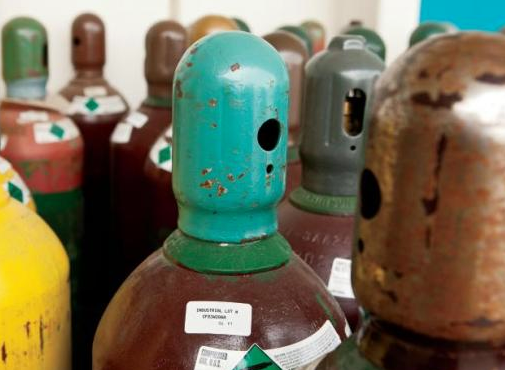Compressed Gas Safety

Clinical personnel must become familiar with the properties and inherent hazards of the compressed gases used in patient care areas. Compressed gas cylinders contain varying pressures of inert, toxic, flammable, or corrosive gases. Personnel must be cautious when handling or storing compressed gas cylinders. The safety data sheet and product labeling must be reviewed prior to using any compressed gases.
Hazards associated with compressed gases include oxygen displacement, fires, explosions, toxic gas exposures and high pressure. Compressed gas cylinders can become projectiles due to the high pressure if the cylinder or valve were to rupture. The following is a list of commonly used gases in clinical practices and the hazards the gas presents:
- Inert Gases – Nitrogen, Argon, Helium, Carbon Dioxide – Asphyxiant
- Carbon Monoxide – Toxic and Flammable
- Oxygen – Oxidizer
- Liquid Nitrogen – Asphyxiant and Extreme Cold
- Nitrous Oxide – Asphyxiant and Oxidizer
Additional controls may be needed upon evaluation of compressed gases that are classified as toxic, flammable, and/or an asphyxiant. Oxidizing gases must be stored 20 feet away from all flammable gases.
Compressed gas cylinders must be transported on a hand truck or cart equipped with a chain. The valve cap must be on during transportation. Personnel must not roll or drag the cylinders to the desired location.
Compressed gas cylinders empty or full must be secure in the upright position at all times. The valve cap must in place during storage and transportation.
Review the Clinical Safety Manual for a detailed discussion on the proper handling of compressed gas cylinders.